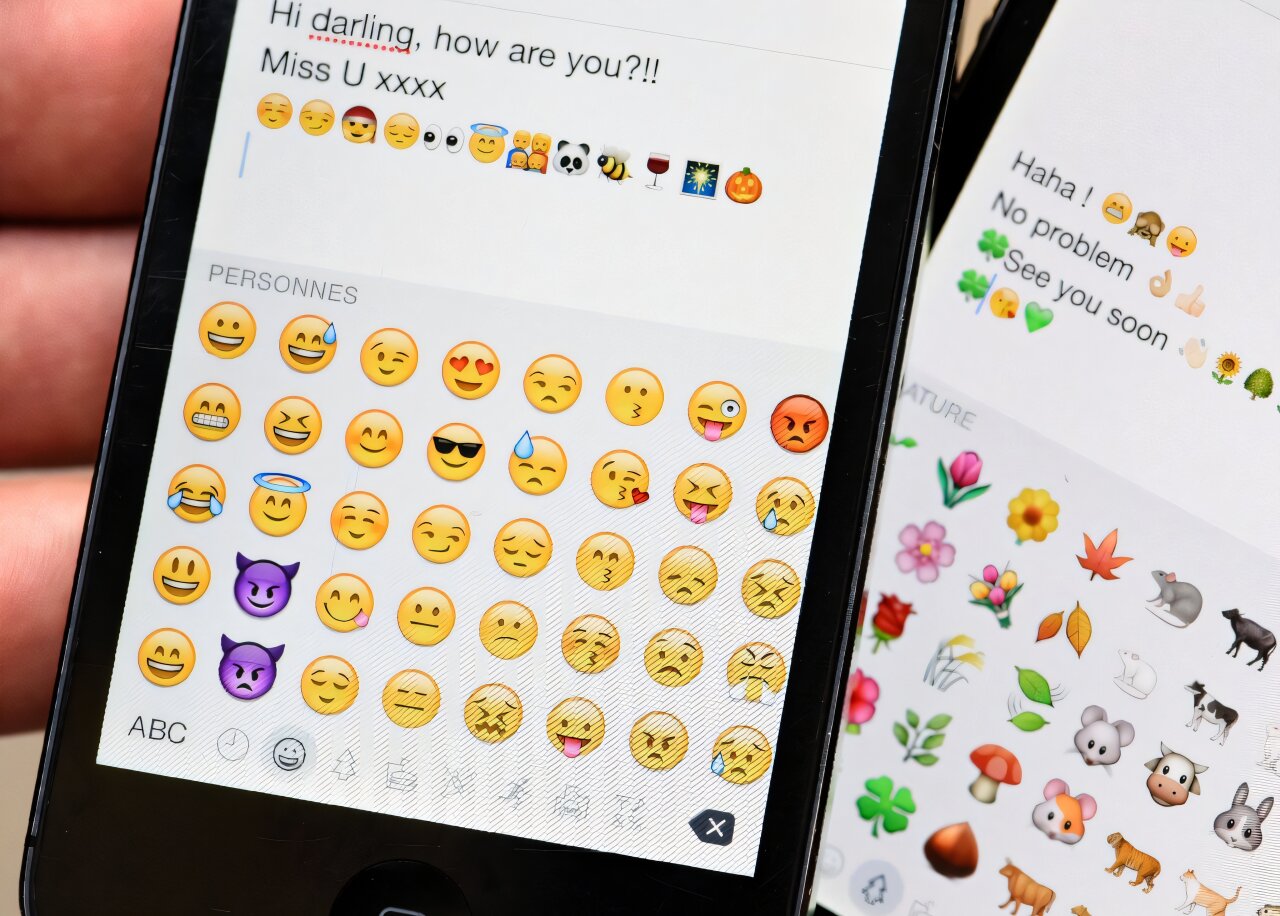Tech
AI chatbots are becoming everyday tools for mundane tasks, use data shows

Artificial intelligence is fast becoming “part of the furniture.” A decade after IBM’s Watson triumphed on “Jeopardy!,” generative AI models are in kitchens and home offices. People often talk about AI in science fiction terms, yet the most consequential change in 2025 may be its banal ubiquity.
To appreciate how ordinary AI use has become, it helps to remember that this trend didn’t start with generative chatbots. A 2017 Knowledge at Wharton newsletter documented how deep learning algorithms were already powering chatbots on social media and photo apps’ facial recognition functions. Digital assistants such as Siri and Alexa were performing everyday tasks, and AI-powered image generators could create images that fooled 40% of viewers.
When ChatGPT became publicly available on Nov. 30, 2022, the shift felt sudden, but it was built on years of incremental integration. AI’s presence is now so mundane that people consult chatbots for recipes, use them as study partners and rely on them for administrative chores.
As a writer and professor who studies ways that generative AI can be an everyday collaborator, I find that recent usage reports show how AI has been woven into everyday life. (Full disclosure: I am a member of OpenAI’s Educator Council, an uncompensated group of higher education faculty who provide feedback to OpenAI on educational use cases.)
Who’s using ChatGPT and why?
Economists at OpenAI and Harvard analyzed 1.5 million ChatGPT conversations from November 2022 through July 2025. Their findings show that adoption has broadened beyond early users: It’s being used all over the world, among all types of people. Adoption has grown fastest in low- and middle-income countries, and growth rates in the lowest-income countries are now more than four times those in the richest nations.
Most interactions revolve around mundane activities. Three-quarters of conversations involve practical guidance, information seeking and writing. These categories are for activities such as getting advice on how to cook an unusual type of food, where to find the nearest pharmacy, and getting feedback on email drafts. More than 70% of ChatGPT use is for nonwork tasks, demonstrating AI’s role in people’s personal lives. The economists found that 73% of messages were not related to work as of June 2025, up from 53% in June 2024.
Claude and the geography of adoption
Anthropic’s economic index paints a similar picture of uneven AI adoption. Researchers at the company tracked users’ conversations with the company’s Claude AI chatbot relative to the working-age population. The data shows sharp contrasts between nations. Singapore’s per-capita use is 4.6 times higher than expected based on its population size, and Canada’s is 2.9 times higher. India and Nigeria, meanwhile, use Claude at only a quarter of predicted levels.
In the United States, use reflects local economies, with activity tied to regional strengths: tech in California, finance in Florida and documentation in D.C. In lower-use countries, more than half of Claude’s activity involves programming. In higher-use countries, people apply it across education, science and business. High-use countries favor humans working iteratively with AI, such as refining text, while low-use countries rely more on delegating full tasks, such as finding information.
It’s important to note that OpenAI reports between 400 million and 700 million weekly active users in 2025, while third-party analytics estimate Claude at roughly 30 million monthly active users during a similar time period. For comparison, Gemini had approximately 350 million monthly active users and Microsoft reported in July 2025 more than 100 million monthly active users for its Copilot apps. Perplexity’s CEO reported in an interview that the company’s language AI has a “user base of over 30 million active users.”
While these metrics are from a similar time period, mid-2025, it’s important to note the differences in reporting and metrics, particularly weekly versus monthly active users. By any measure, though, ChatGPT’s user base is by far the largest, making it a commonly used generative AI tool for everyday tasks.
Everyday tool
So, what do mundane uses of AI look like at home? Consider these scenarios:
- Meal planning and recipes: A parent asks ChatGPT for vegan meal ideas that use leftover kale and mushrooms, saving time and reducing waste.
- Personal finance: ChatGPT drafts a budget, suggests savings strategies or explains the fine print of a credit card offer, translating legalese into plain language.
- Writing support: Neurodivergent writers use ChatGPT to organize ideas and scaffold drafts. A writer with ADHD can upload notes and ask the model to group them into themes, then expand each into a paragraph while keeping the writer’s tone and reasoning. This helps reduce cognitive overload and supports focus, while the writer retains their own voice.
These scenarios illustrate that AI can help with mundane decisions, act as a sounding board and support creativity. The help with mundane tasks can be a big lift: By handling routine planning and information retrieval, AI frees people to focus on empathy, judgment and reflection.
From extraordinary to ordinary tool
AI has transitioned from a futuristic curiosity to an everyday co-pilot, with voice assistants and generative models helping people write, cook and plan.
Inviting AI to our kitchen tables not as a mysterious oracle but as a helpful assistant means cultivating AI literacy and learning prompting techniques. It means recognizing AI’s strengths, mitigating its risks and shaping a future where intelligence—human and artificial—works for everyone.
This article is republished from The Conversation under a Creative Commons license. Read the original article.![]()
Citation:
AI chatbots are becoming everyday tools for mundane tasks, use data shows (2025, October 28)
retrieved 28 October 2025
from https://techxplore.com/news/2025-10-ai-chatbots-everyday-tools-mundane.html
This document is subject to copyright. Apart from any fair dealing for the purpose of private study or research, no
part may be reproduced without the written permission. The content is provided for information purposes only.
Tech
We Brought Our Dogs and Families to Sleep Outside in All the Best Tents

REI’s Base Camp tent is the best-designed, best-built six-person tent I’ve ever used. It also proved itself one of the most waterproof large tents in our testing. It’s a traditional dome tent design, with two crossed poles and two side poles. The tent floor is high-quality 150-denier (150D) polyester, while the sides are a combination of mesh and 40D nylon. There’s loads of storage pockets, double doors, great vents, and huge windows, making it comfortable even in summer heat. It’s also one of the few family-size, three-season tents on the market with a nearly full-length rain fly (made of 75-denier polyester), which makes it suitable for those more weather-prone fall and spring trips (the fly sits about 3 inches off the ground, so not four-season level like the Marmot below, but close). It’s also surprisingly stable in the wind considering how tall it is (74 inches for the six-person model).
The inside is roomy. My family of five (two adults, two teenagers, one 10-year-old) had no trouble fitting inside. There’s plenty of room for five smaller sleeping pads, or you could double up on Exped’s Megamat Duo ($349) for an extra cushy car camping setup. The vestibules are nice and roomy too, offering storage for the rest of your camping gear. If you really want some extra, covered, outdoor space, you can grab the Base Camp Vehicle Connector for $170 (untested, but it’s on my list).
With two huge doors that have big, no-snag zippers, it’s easy to get in and out of the Base Camp without stepping on anyone. There’s also a wide variety of storage options, including six pockets (one for each person), and lots of hang loops stitched into the ceiling allowing you to hang lights or string a clothesline. There are also plenty of mesh vents, which make it possible to get a nice cross breeze through the tent on warm nights.
| Specs | |
|---|---|
| Dimensions | 100 x 86 in. (4-person) / 110 x 110 in. (6-person) |
| Interior living space | 56 sq. feet (4-person) / 84 sq. feet (6-person) |
| Vestibule space | 27 + 17 sq. feet (6-person) |
| Height | 63 in (4-person) / 74 in (6-person) |
| Weight | 17 lbs., 5.6 oz. (4-person) / 20 lbs., 11.5 oz. (6-person) |
| Capacity | 4- or 6-person |
| Doors | 2 |
Tech
OnlyFans Goes to Business School

OnlyFans has tapped the founder of a lingerie company and former nude model to launch business classes on the platform.
Rachael McCrary, a longtime lingerie designer and founder of the company Spice Rack, is launching four videos on OnlyFans Wednesday. The videos are quite different from the usual OnlyFans fare. They’ll focus on pitching investors, building a brand, and navigating being an entrepreneur as a woman, McCrary tells WIRED. More videos will follow. She’s also creating a Spice Rack x OnlyFans clothing line that will launch on the site later this year.
The move is OnlyFans’ first foray into making content focused solely on building a business. It’s part of the platform’s continued push into safe-for-work content that’s meant to complement the adult content it’s known for.
“OnlyFans is a community of over 4 million creator businesses, so it makes sense that we are the perfect platform to share tips on entrepreneurship,” Keily Blair, CEO of OnlyFans, tells WIRED in a statement. “As we’ve seen in other genres like comedy and sport, it takes just one creator to recognize the opportunity and others will follow suit.”
McCrary, 48, said she met Blair at the tech conference Summit Baja last November, when they came up with the idea.
As a former SuicideGirl—a community of alt pin-up girls founded in the early 2000s—she says she felt stigmatized by her past when working in corporate fashion. At one of her jobs, she says her colleagues looked at her SuicideGirls photos while she was at work.
“I just wanted to start crying,” she says.
Then she decided to launch her own businesses, but “pitching underwear to tech VCs, I already felt like I had to prove myself more,” McCrary says. According to Inc., only 1 percent of VC-funded companies were wholly led by women in 2024. Spice Rack, which McCrary says is backed by Sequoia Partners China and Mucker Capital, is among them.
“Being naked on the internet and raising venture capital from the largest funds in the world is a very rare Venn diagram,” McCrary says, adding that OnlyFans was already looking to expand into more non-adult content. “We decided to do a masterclass format of business classes.” The first two classes will be free, while the others will require a subscription to McCrary’s page.
Over the years, McCrary says, she’s been approached by many young women, including sex workers, seeking advice on how to start their own businesses or pivot away from adult content. After she revealed her past as a SuicideGirl on a panel in 2022, she says an adult content creator came up to her and said, “I didn’t know that you were naked on the internet, and that makes me feel like I can have a career after this.”
Tech
Australian police design AI tool to decipher predators’ Gen Z slang

Australian police are working on an AI prototype that will help them decipher Gen Z slang and emoji-laden messages written by online predators, a top official said Wednesday.
Australian Federal Police Commissioner Krissy Barrett said social media had become a breeding ground for bullying, sexual exploitation and radicalization.
Police were working with software giant Microsoft to develop a tool that would unravel sinister messages hidden by seemingly innocuous emojis and slang, she said.
“Clever AFP members, with Microsoft, are developing a prototype AI tool that will interpret emojis and Gen Z-and-Alpha slang in encrypted communications.
“This prototype aims to make it quicker for our teams to save children from harm much earlier.”
Barrett also warned about the rise of so-called “crimefluencers”—online predators who used their social media savvy to target young and vulnerable users.
“They are crimefluencers, and they are motivated by anarchy and hurting others, with most of their victims pre-teen or teenage girls,” she said.
Australia will from December 10 force social media platforms such as Facebook, Instagram and TikTok to remove users under the age of 16.
There is keen interest in whether Australia’s sweeping restrictions can work, as regulators around the globe wrestle with the dangers of social media.
© 2025 AFP
Citation:
Australian police design AI tool to decipher predators’ Gen Z slang (2025, October 29)
retrieved 29 October 2025
from https://techxplore.com/news/2025-10-australian-police-ai-tool-decipher.html
This document is subject to copyright. Apart from any fair dealing for the purpose of private study or research, no
part may be reproduced without the written permission. The content is provided for information purposes only.
-

 Fashion1 week ago
Fashion1 week agoChinese woman charged over gold theft at Paris Natural History Museum
-

 Tech1 week ago
Tech1 week agoThis Smart Warming Mug Is Marked Down by $60
-

 Entertainment1 week ago
Entertainment1 week agoJohn Grisham unveils his first-ever mystery, “The Widow”
-

 Tech1 week ago
Tech1 week agoEaster Island’s Moai Statues May Have Walked to Where They Now Stand
-

 Fashion1 week ago
Fashion1 week agoThe North Face and Cecilie Bahnsen launch second collaboration
-

 Tech1 week ago
Tech1 week agoOpenAI has slipped shopping into ChatGPT users’ chats—here’s why that matters
-

 Politics4 days ago
Politics4 days agoTrump slams ‘dirty’ Canada despite withdrawal of Reagan ad
-

 Fashion1 week ago
Fashion1 week agoNew EU strategy proposed to shape global clean, resilient transition


















